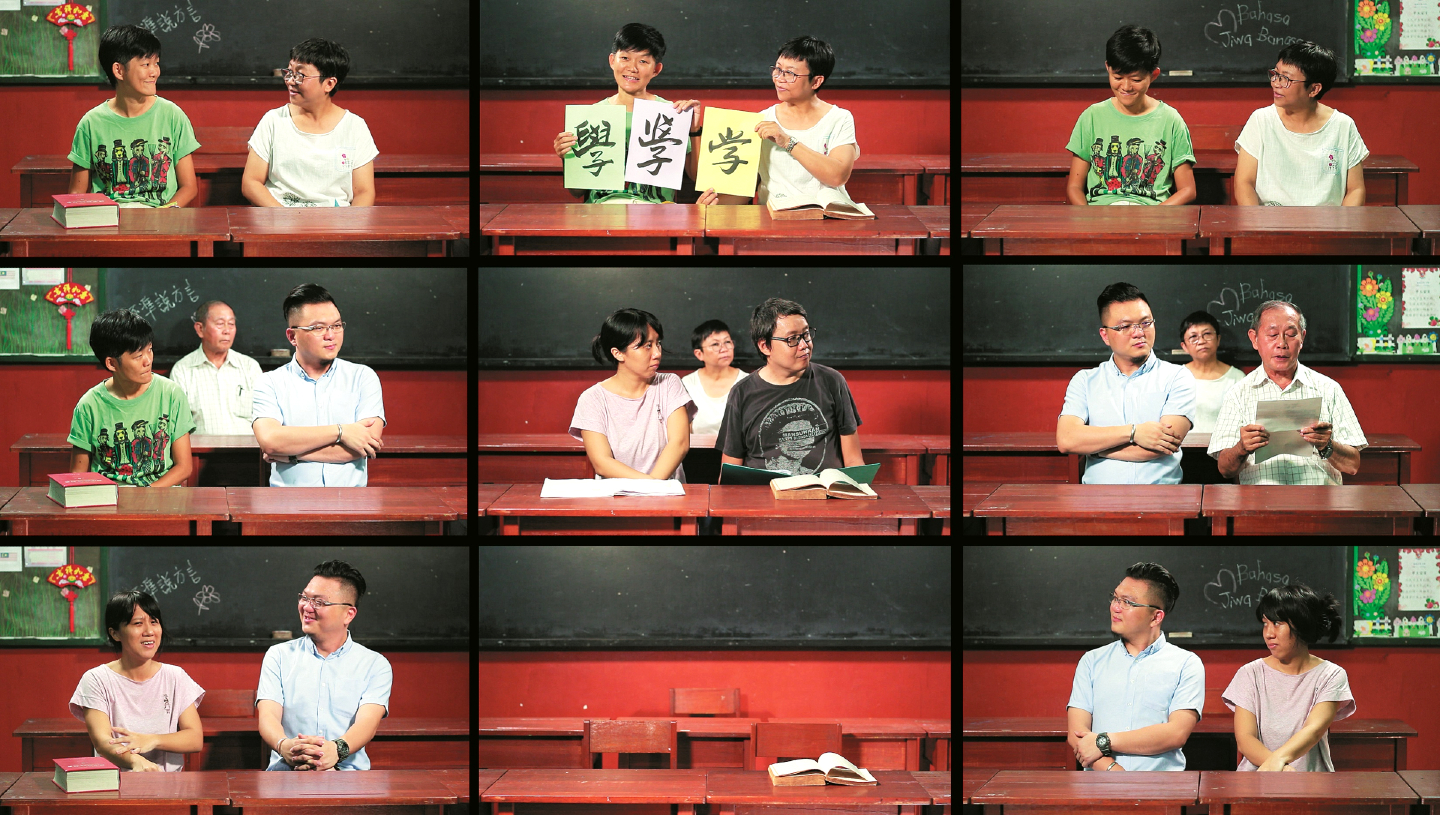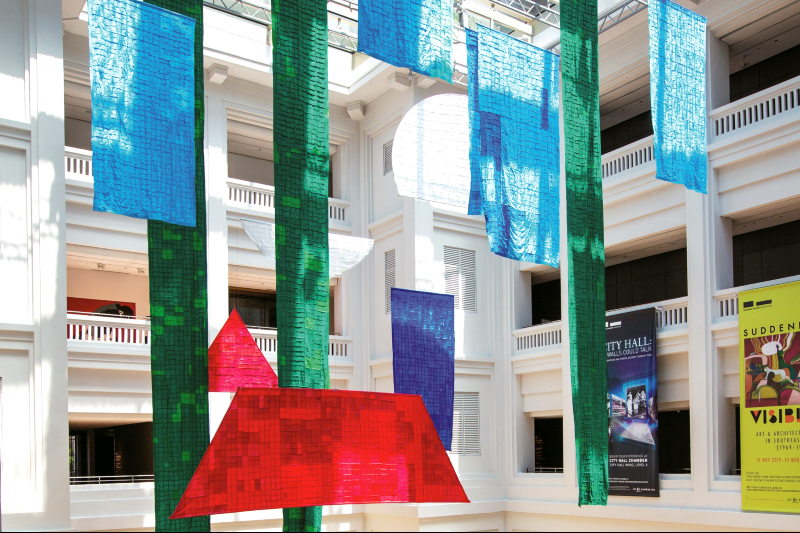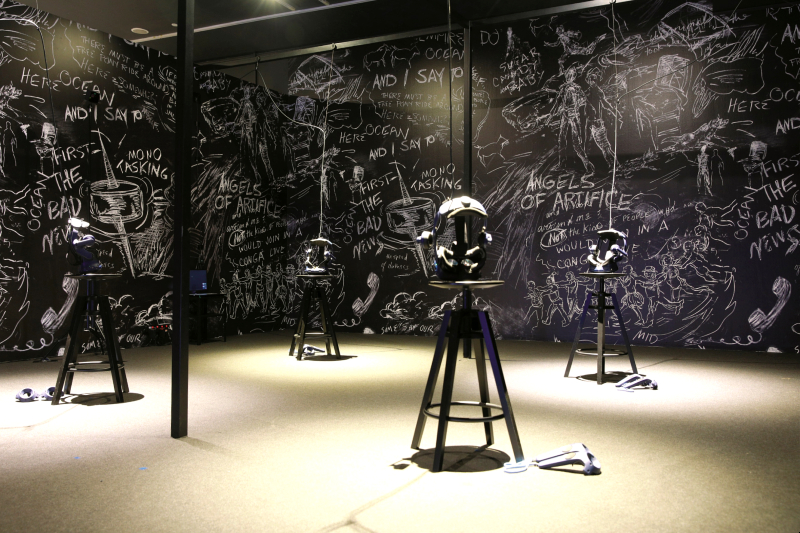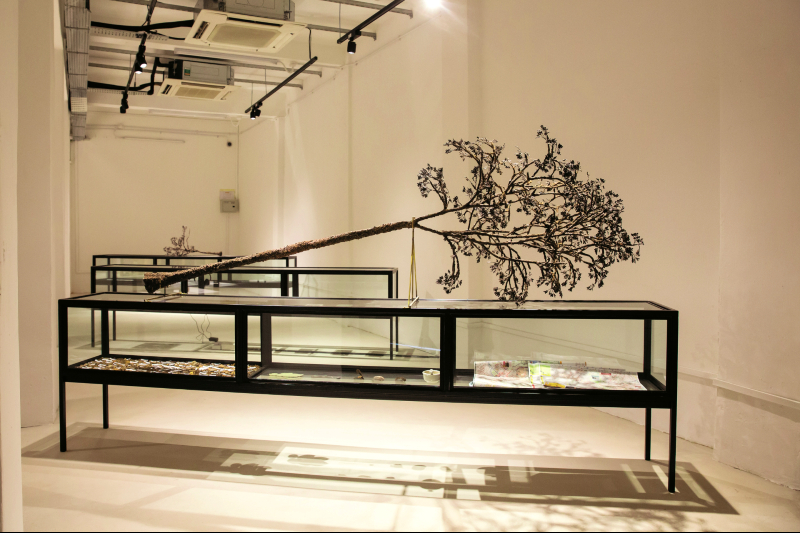
Penang-based Okui Lala presents a three-channel video installation that simulates a multilingual classroom setting (Photo: Okui Lala)
Titled "Every Step in the Right Direction", the Singapore Biennale 2019 invites 77 artists and art collectives from Singapore, Southeast Asia and around the world to shed light on the importance of change. Through the act of artistic exploration, the showcase (until March 22) is putting its faith squarely in the potential of art and its understanding to rework the world. Here are five highlights that stole the show.
War and Humans, 2019
Haifa Subay, Yemen.
The young Yemeni mural artist has come a long way from home to NGS to paint a series of nine images on the walls outside one of the biennale galleries. The simplicity and brightness of the artworks belie the heaviness of the imagery Haifa painted, perhaps the most powerful of which is the impact of a bullet hole in the wall, based on her own experience of a stray bullet coming through her room and lodging in her wall as she slept. “It’s a good thing I was lying down,” says Haifa.
In the Skin of a Tiger: Monument to What We Want (Tugu Kita), 2019
Sharon Chin, Malaysia.
From Haifa’s mural, one can look out at the Singapore Courtyard of NGS and spot Port Dickson-based artist Chin’s colourful banners. Commissioned for the biennale, she invited the Singaporean public to come and help sew the pieces for her large-scale fabric installation, which are taken from flags of Malaysia’s political parties. Negotiating what is seen and unseen, the invisible threads nevertheless reveal the actions and efforts of those who worked to put it together, ultimately creating a monument of commemoration from the mundane. As for the title, the Muay Thai practitioner says the phrase “being solid in our own skin” is used in martial arts when one is truly strong. So, are we still wearing the skin of a tiger? Or have we truly become one? How do we get there?
National Language Class: Our Language Proficiency, 2019
Okui Lala, Malaysia.
Located in the foyer of the Asian Civilisations Museum, Penang-based Okui Lala presents a three-channel video installation that simulates a multilingual classroom setting. Inviting her family and friends to participate, their conversation and discussion highlight the complexity of multilingual conditions against the backdrop of language development in Malaysia over the last few decades — how vernacular and colonial languages continue to exist in friction with Bahasa Malaysia and the differences between the classroom and the real world.
La Camera Insabbiata (The Chalkroom), 2017
Laurie Anderson and Hsin-Chien Huang, the US and Taiwan.
This one-of-a-kind VR art experience takes place within the Singapore Management University’s de Suantio Gallery. Huang helped bring Anderson’s surrealistic vision to life in an experience that takes the participant through a labyrinth inspired by her memories. Rooms of blackboards filled with scribbles signify the inner sanctum of a memory bank, as one “flies” from room to room under your own control, triggering different experiences and scenarios in each. The 15-minute escape into virtual reality is guided by Anderson’s soothing voice. The work won the best VR Experience Award at the 74th Venice Film Festival in 2017.
Reincarnations (Hopea Sangal and Sindora Wallichii), 2019
Ruangsak Anuwatwimon, Thailand.
This work in Gillman Barracks’ Block 22 is a story of two trees. The Hopea Sangal is critically endangered in the region and was believed to be extinct in Singapore until one day, in 2002, a botanist spotted one by the side of the road. Alas, the tree was struck by lighting days after and within two weeks, it was chopped down, not because of the damage, but rather, a property management company was worried it may fall on a building, even though it was confirmed to be healthy.
The Sindora Wallichii is not endangered, but one specimen had grown to the titanic height of 76m during the 1950s. But its location in the Changi Barracks meant its unfortunate demise, as the British army deemed it an easy target for aerial bombing and felled it. None has grown to such heights since then. Ruangsak created “reincarnations” of these two trees as part of a documentation exercise, at the same time questioning conservation. “Who gets to decide what gets special attention? Which step is in the right direction?”
For more information on activities and guide maps, see here. Buy tickets here.
This article first appeared on Dec 16, 2019 in The Edge Malaysia.







